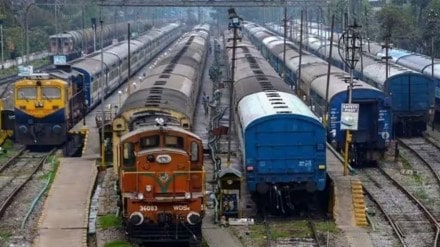Railway Minister Ashwini Vaishnaw on Thursday (December 5) inspected the Integrated Track Monitoring System (ITMS) and Road Cum Rail Inspection Vehicle (RCRIV) at New Delhi railway station. Vaishnaw announced that the ITMS will be deployed across all railway zones to enable comprehensive monitoring of tracks.
“This initiative aims to enhance the safety and efficiency of the railway network by leveraging advanced technology to improve track inspections and maintenance,” Vaishnaw said during the inspection.
Along with Vaishnaw, several senior officials were present, including Satish Kumar, Chairman and CEO of the Railway Board; Naveen Gulati, Member (Infrastructure), Railway Board; Ashok Kumar Verma, General Manager of Northern Railway (NR); and other senior members.
Vaishnaw stresses tech for better trackmen work environment
In a statement, Himanshu Shekhar Upadhyay, Chief Public Relations Officer of NR, highlighted that Vaishnaw emphasised the role of modern technology in improving the working conditions for trackmen, the personnel responsible for maintaining railway tracks.
“He stated that with the use of ITMS and RCRIV, trackmen will now have access to accurate, real-time data, which will make their job easier, safer, and more efficient,” Upadhyay said.
What is Integrated Track Monitoring System?
The ITMS is a system installed on board the Track Recording Car (TRC), capable of monitoring track parameters at speeds ranging from 20-200 km/h. These integrated systems combine various technologies to track and measure railway track conditions, ensuring the safety and efficiency of rail operations.
Upadhyay further explained that the ITMS provides real-time alerts via SMS and email for bad spots on the tracks that need immediate attention, which is especially helpful for those working on track maintenance.
The RCRIV, a modified version of the Tata Yodha model, is equipped with two iron wheels at the rear (750 mm diameter) and two iron wheels at the front (250 mm diameter). It also features three cameras that continuously record track conditions, with data backup lasting approximately 15 days.
This new technology aims to significantly improve track monitoring and maintenance, contributing to safer and more efficient railway operations across the country.
